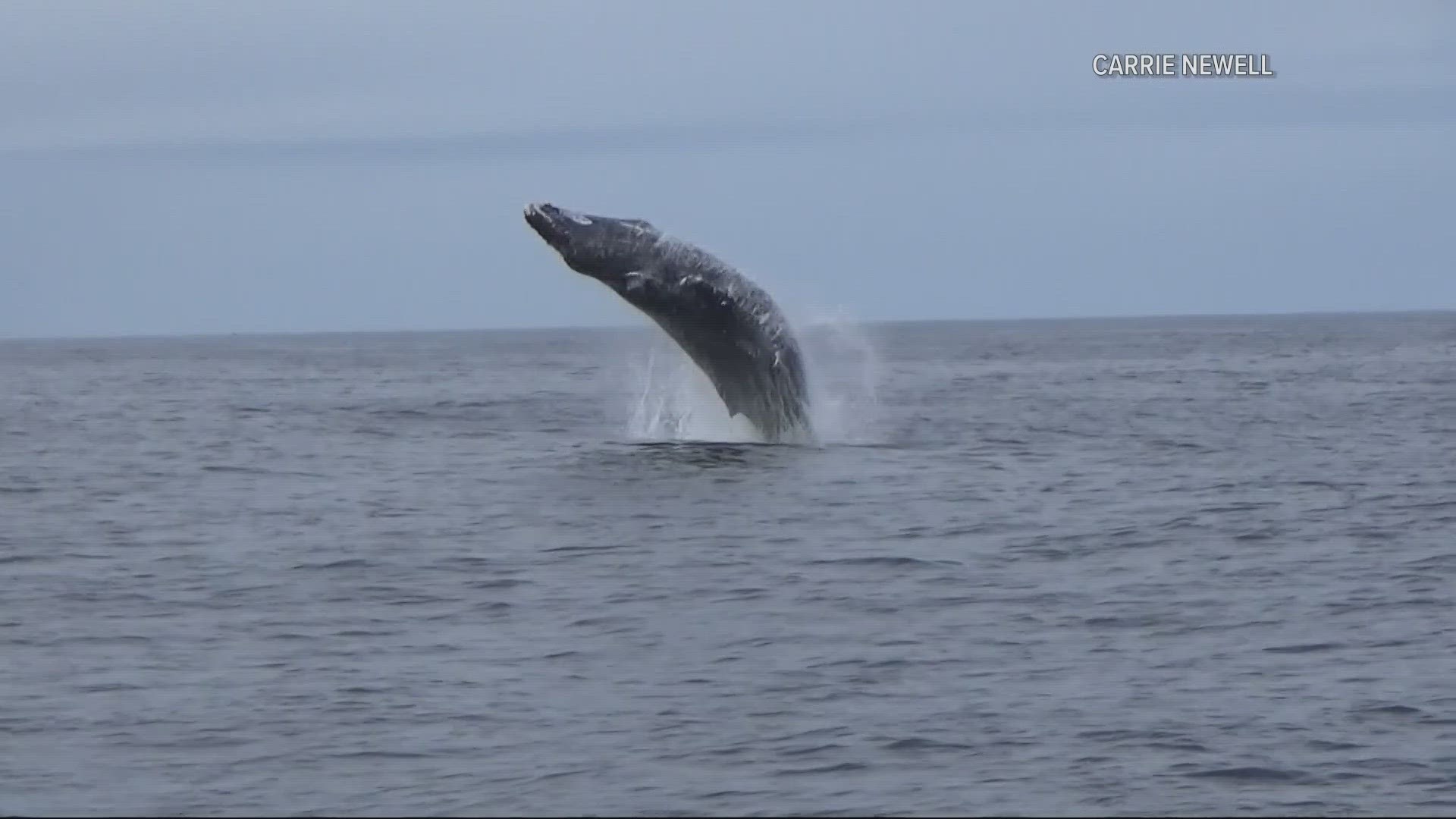CORVALLIS, Ore. — Pacific gray whale populations are threatened by microplastics in the ocean, according to an Oregon State University study that analyzed the poop of whales feeding off the Oregon coast. The researchers determined that the whales now consume an average of 21 million microplastic particles per day.
Ocean microplastics can negatively impact any marine life, but gray whales are particularly at risk because they're "filter feeders" whose diet primarily consists of tiny invertebrates called plankton. Filter feeder whales use a series of plates and bristles to strain plankton out of seawater, and this same process also traps microplastic particles.
The study focused on a group of 230 whales that spend their winters in Baja California, Mexico. The group, known as the "Pacific Coast Feeding Group," then heads north to British Columbia for the summer, and can be seen swimming and feeding off the Oregon Coast seasonally. One of the most popular spots to observe the Pacific Coast Feeding Group is from the Oregon Whale Watching Center in Depoe Bay.
Researches collected and analyzed zooplankton off the coast to track the microplastics. Among 26 samples, they found 418 suspected microplastics, half of which were plastic fibers from clothes. They then collected five poop samples to see if the plastics in the whales' food supply were also in their stools. They found microplastics in all five samples, with microfibers again accounting for half of the particles.
The contamination adds to the list of stress factors that whales already have to deal with on the Oregon coast. The Pacific Feeding Group members are skinnier than other populations in the area, noted Leigh Torres, an associate professor at OSU and one of the study's co-authors.
"Whales are already stressed out with boats driving around all the time and the risk of getting hit by one of those boats," she said. "They might also have less prey around because of changes in the environment, like less kelp. And now the quality of the prey might be poor because of these high microplastic loads."
The fact that microplastics in the ocean can make their way into organisms as small as zooplankton is concerning, the researchers said, and not just for whales.
"It's a wake-up call that whales are getting that much microplastic from what they eat," Torres said. "It's likely that humans are also getting a lot of microplastics from our own fish diet."
There is evidence to support that concern; a study published in the Journal of Hazardous Materials found that humans likely consume between 0.1 to 5 grams of plastic per week.
A previous OSU study in 2021 also looked at whale poop to determine the impact of environmental stressors like commercial activity and boat traffic off the Oregon Coast. This latest project continues that work, and adds microplastics to the list of issues facing whales.

